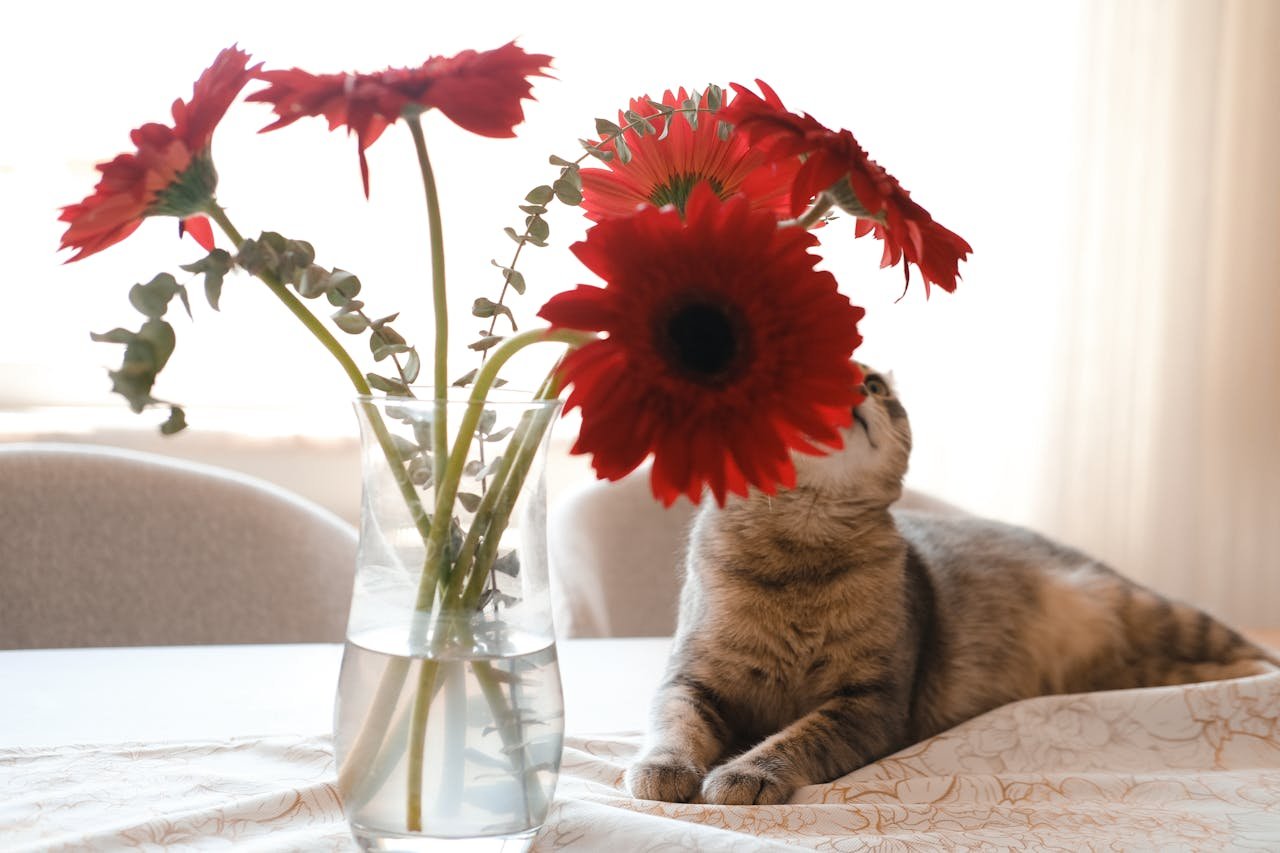Creating the Perfect Pet-Friendly Home: Room by Room Guide
Creating a pet-friendly home is one of the most rewarding decisions you can make as a pet owner. Whether you have a playful puppy, a curious cat, or even smaller pets like rabbits or birds, designing your living space to accommodate their needs while maintaining style and functionality requires thoughtful planning.
This comprehensive room-by-room guide will walk you through transforming your home into a safe, comfortable, and pet-friendly environment that both you and your furry companions will love.
Understanding the Basics of Pet-Friendly Home Design
Before diving into specific rooms, it’s important to understand what makes a home truly pet-friendly. A pet-friendly home isn’t just about having a pet bed in the corner or a food bowl in the kitchen. It’s about creating an environment where your pets feel secure, have their own spaces, and can move freely without encountering hazards.
When designing a pet-friendly home, you need to consider durability, safety, cleanliness, and comfort. Your flooring should withstand scratches and accidents, your furniture should resist pet hair and stains, and your entire home should be free from toxic plants and dangerous items that pets might ingest.
Start by getting down to your pet’s eye level and walking through each room. This perspective helps you identify potential hazards like dangling cords, accessible trash cans, or sharp corners that might injure your pet.
The Living Room: Creating a Welcoming Space for Everyone
Furniture Selection and Arrangement
The living room is where families spend quality time together, and your pets want to be part of that experience. When selecting furniture for a pet-friendly home, opt for materials that are durable and easy to clean.
Leather and synthetic fabrics work exceptionally well in pet-friendly homes because they resist pet hair and can be wiped clean easily. Avoid delicate fabrics like silk or velvet that show every paw print and scratch. Microfiber is another excellent choice as it’s stain-resistant and comfortable for both humans and pets.
Consider furniture with removable, washable covers that can be thrown in the washing machine when accidents happen. Many modern furniture companies now design specifically for pet owners, offering stylish pieces with pet-proof features built right in.
Smart Living Room Solutions: Install corner protectors on sharp furniture edges, secure loose electrical cords with cord management systems, and place decorative storage baskets filled with pet toys for easy access and tidy appearance.
Flooring Considerations
Your flooring choice significantly impacts how pet-friendly your living room becomes. Hardwood floors are beautiful but can scratch easily. If you love the look of wood, consider luxury vinyl plank flooring that mimics wood but offers superior scratch resistance and water resistance.
Area rugs can define spaces and add warmth, but choose ones that are machine washable or easy to spot clean. Indoor-outdoor rugs work wonderfully in pet-friendly homes because they’re designed to withstand moisture and are incredibly durable.
The Kitchen: Safety and Hygiene in Pet Feeding Areas
Designating a Pet Feeding Station
The kitchen often serves as the feeding area for pets, but it requires careful planning to maintain hygiene and safety. Create a dedicated feeding station that’s out of the main foot traffic path but still easily accessible for both you and your pets.
Use raised feeding stations for larger dogs to promote better digestion and reduce strain on their necks and backs. For smaller pets or cats, place food and water bowls in quiet corners where they feel safe while eating.
Invest in non-slip mats under food and water bowls to prevent spills from spreading across your floor. These mats also make cleanup much easier and protect your flooring from water damage.
Keep trash cans secure with locking lids or store them inside cabinets. Many common foods like chocolate, grapes, onions, and certain artificial sweeteners are toxic to pets. Store these items in high cabinets or containers that pets cannot access.
Cabinet and Pantry Safety
Install childproof locks on lower cabinets where you store cleaning supplies, as many household cleaners are toxic to pets. Keep medications, including vitamins and supplements, in high cabinets that pets absolutely cannot reach.
If you store pet food in the pantry, use airtight containers to keep it fresh and prevent pests. Label containers clearly and keep different types of pet food separated to avoid feeding the wrong diet to each pet.
The Bedroom: Restful Sleep for You and Your Pets
Sleeping Arrangements
Many pet owners wonder whether pets should sleep in the bedroom. This personal choice depends on your preferences and your pet’s behavior. If you choose to allow pets in your bedroom, creating a pet-friendly sleeping environment benefits everyone.
Place a comfortable pet bed beside your bed so your pet has their own space but still feels close to you. Choose beds with removable, washable covers that can handle regular cleaning. Orthopedic beds work wonderfully for older pets with joint issues.
If your pets sleep on your bed, invest in waterproof mattress protectors and use durable, washable bedding. Keep extra sets of sheets and blankets specifically designated for when pets share your bed.
Keep a lint roller on your nightstand for quick touch-ups on bedding and clothing. Install hooks on the back of your bedroom door for storing pet grooming supplies and leashes so they’re always within reach.
Closet Protection
Pets are naturally curious about closets because they smell like their favorite people. Keep closet doors closed or install baby gates if your pets tend to explore. Store shoes on higher shelves or in closed containers to protect them from becoming chew toys.
The Bathroom: Managing Pet Hygiene
Bathing and Grooming Space
If you have a larger bathroom, designating a space for pet grooming makes maintaining your pet’s hygiene much more convenient. For smaller bathrooms, keep pet grooming supplies organized in a caddy that can be easily stored when not in use.
Install a handheld showerhead for easier pet bathing, and place a non-slip mat in the tub or shower to prevent your pet from slipping during bath time. Keep towels specifically designated for pet use separate from human towels.
Bathroom Safety Measures: Store toilet bowl cleaners, medications, and beauty products in high cabinets. Keep the toilet lid closed to prevent pets from drinking treated water or accidentally falling in. Install toilet lid locks if you have particularly curious pets.
For cat owners, the bathroom can be an ideal location for the litter box if space permits. Ensure proper ventilation and clean the litter box daily to maintain freshness. Consider covered litter boxes to contain odors and provide privacy for your cat.
The Home Office: Productivity with Pets
Creating a Pet-Friendly Workspace
As more people work from home, creating a pet-friendly home office has become increasingly important. Your pets want to be near you during the day, so designating a space for them in your office helps them feel included while you work.
Place a comfortable pet bed or blanket near your desk where your pet can rest while still seeing you. This helps reduce anxiety and keeps them from constantly seeking your attention while you’re trying to focus.
Manage cables and cords carefully in your home office, as these can be tempting chew toys for pets. Use cable management systems, cord covers, or run cables through furniture to keep them out of reach.
Schedule regular breaks to play with or walk your pets. This not only helps them burn energy but also gives you much-needed breaks from screen time. Set reminders if necessary to ensure your pets get adequate attention throughout the workday.
The Outdoor Spaces: Gardens, Patios, and Yards
Securing Your Yard
If you’re fortunate enough to have outdoor space, making it pet-friendly provides enrichment and exercise opportunities for your pets. Start by ensuring your yard is completely secure with proper fencing that your pets cannot jump over, dig under, or squeeze through.
Inspect fencing regularly for damage or gaps. Consider extending fencing underground if you have dogs that like to dig. For cats, cat-proof fencing or enclosed outdoor areas called “catios” provide safe outdoor access.
Pet-Safe Landscaping
Many common plants are toxic to pets, so research every plant in your garden carefully. Remove or fence off dangerous plants like lilies, azaleas, sago palms, and oleander. Choose pet-safe alternatives like sunflowers, roses, and most herbs.
Create pathways using pet-friendly ground covers like clover or designated paths using mulch or stones. Avoid cocoa mulch, which is toxic to dogs, and opt for cedar or pine mulch instead.
Never use pesticides, herbicides, or fertilizers in areas where pets spend time. These chemicals can be absorbed through paw pads or ingested when pets groom themselves. Choose pet-safe alternatives or create pet-free zones during treatment periods.
Outdoor Amenities
Consider adding pet-friendly features like a small wading pool for dogs during hot weather, shaded areas for rest, and designated digging zones filled with soft sand. Install outdoor water stations to keep pets hydrated during playtime.
Entryway and Mudroom: The First Line of Defense
Managing Dirt and Debris
The entryway or mudroom is your first defense against dirt, mud, and debris that pets bring inside. Setting up this space properly saves you countless hours of cleaning throughout your home.
Place durable, washable rugs or mats both inside and outside entrance doors. These catch dirt before it spreads throughout your home. Choose dark colors that hide dirt between cleanings and materials that can handle regular washing.
Install hooks at various heights for leashes, coats, and bags. Keep a basket or bin near the door for storing pet toys that shouldn’t be scattered throughout the house. Store poop bags, walking shoes, and other outdoor essentials in this area for easy access.
Mudroom Organization: Keep a towel specifically for wiping muddy paws near the door. Consider installing a pet washing station if space allows, complete with a handheld sprayer and drain for easy cleanup after outdoor adventures.
General Pet-Friendly Home Maintenance Tips
Choosing Pet-Friendly Materials Throughout Your Home
When renovating or decorating your pet-friendly home, material selection makes a tremendous difference in long-term maintenance and durability. Understanding which materials work best helps you make informed decisions that benefit both your budget and your pets’ wellbeing.
Flooring Materials
Luxury vinyl plank remains one of the best flooring choices for pet-friendly homes. It’s waterproof, scratch-resistant, and available in styles that mimic hardwood, stone, or tile. Installation is relatively simple, and replacement of damaged planks is straightforward.
Tile flooring works well in high-traffic areas like kitchens and entryways. While grout lines require regular cleaning, sealed tile is extremely durable and resists stains and odors. Ceramic or porcelain tiles offer excellent water resistance.
Paint and Wall Coverings
Choose semi-gloss or satin-finish paints for walls in pet-friendly homes. These finishes are easier to wipe clean than flat or matte finishes. Many paint manufacturers now offer pet-friendly paint formulations with low VOCs that are safer for animals.
Consider wainscoting or chair rails in areas where pets frequently brush against walls. These protect walls from scratches and dirt while adding architectural interest to your rooms.
Creating Enrichment Spaces for Mental Stimulation
Indoor Activity Areas
A truly pet-friendly home provides not just safety and comfort but also mental and physical stimulation for your pets. Creating designated play and activity areas keeps pets entertained and reduces destructive behavior.
For cats, install wall-mounted shelves or cat trees that provide vertical space for climbing and exploring. Place these near windows so cats can watch outdoor activity, which provides hours of entertainment.
For dogs, designate a play area with toy storage and space for activities. Rotate toys regularly to keep them interesting and prevent boredom. Consider puzzle feeders and interactive toys that challenge your dog’s mind.
Create a “sniff mat” using a rubber mat and fleece strips for dogs. Hide treats within the strips to encourage natural foraging behavior. This provides mental stimulation and can calm anxious dogs.
Temperature Control and Comfort
Maintaining comfortable temperatures throughout your pet-friendly home ensures your pets’ wellbeing year-round. Pets regulate temperature differently than humans, so consider their needs when adjusting thermostats.
In summer, ensure pets have access to cool areas away from direct sunlight. Consider cooling mats for pets that tend to overheat. Never leave pets in rooms without adequate ventilation or air conditioning during hot weather.
During winter, provide warm bedding and consider pet-safe heating pads for older animals with arthritis. Keep pets away from fireplaces and space heaters that could cause burns.
Dealing with Pet Odors Naturally
Maintaining a fresh-smelling pet-friendly home requires consistent effort but doesn’t need harsh chemicals. Natural solutions work effectively while being safer for your pets.
Baking soda is your best friend in odor control. Sprinkle it on carpets before vacuuming, add it to litter boxes, and place open containers in rooms to absorb odors. White vinegar mixed with water makes an excellent natural cleaning solution for most surfaces.
Natural Air Freshening: Place bowls of activated charcoal in rooms to absorb odors naturally. Essential oil diffusers can freshen air, but ensure oils are pet-safe. Many essential oils toxic to cats include tea tree, eucalyptus, and citrus oils.
Emergency Preparedness in Your Pet-Friendly Home
A well-designed pet-friendly home includes emergency preparedness planning. Prepare an emergency kit that includes several days’ worth of food, water, medications, medical records, and comfort items for each pet.
Keep leashes, carriers, and travel bowls easily accessible in case of evacuation. Ensure your pets wear identification tags with current contact information, and consider microchipping for permanent identification.
Post emergency contact numbers prominently, including your veterinarian, emergency animal hospital, and pet poison control hotline. Make sure all family members and pet sitters know these numbers and emergency procedures.
Final Thoughts on Your Pet-Friendly Home Journey
Creating the perfect pet-friendly home is an ongoing process that evolves as your pets age and their needs change. The investment you make in proper planning, quality materials, and thoughtful design pays dividends in the form of a harmonious household where both humans and pets thrive together.
Remember that a pet-friendly home doesn’t mean sacrificing style for function. With the right approach, you can create beautiful, comfortable spaces that serve everyone in your family, including your four-legged members. Start with one room at a time, implement changes gradually, and adjust as you discover what works best for your specific pets and lifestyle.
Your pets give you unconditional love and companionship. Designing your home with their needs in mind shows that love and care returned, creating a safe, comfortable environment where your pets can live their best lives alongside you.





